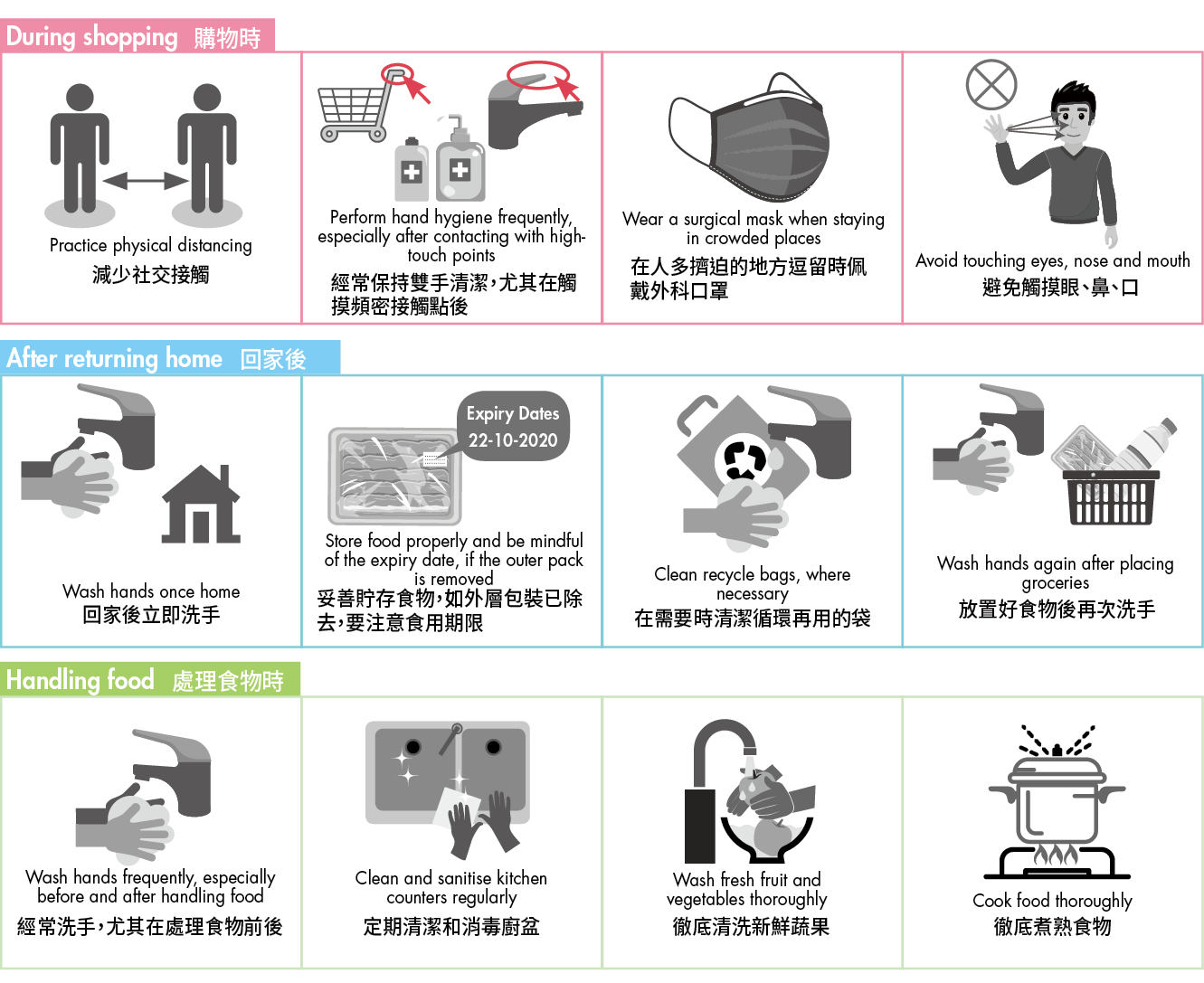
Food Safety Focus (168th Issue, July 2020) – Incident in Focus
Would Salmon Spread COVID-19?
Reported by Dr. Ken CHONG, Scientific Officer,
Risk Assessment Section, Centre for Food Safety
Background
When a new COVID-19 outbreak emerged in Beijing in early June, many were jolted by reports that COVID-19 virus had been detected on a cutting board used for salmon at a market. The Centre for Food Safety took immediate follow-up actions to understand the incident. This article sheds light on the risk of acquiring COVID-19 virus from aquatic food animals and the safety of relevant products.
Aquatic Animals Unlikely to be Infected
COVID-19 virus belongs to a subset of coronaviruses that are only reported to infect mammals; there is no scientific evidence indicating that aquatic food animals can be infected by COVID-19 virus. COVID-19 is a respiratory disease and the virus primarily targets our respiratory tracts and infects our lungs. One of the major physiological differences between humans and finfish is that fish do not have lungs and are therefore not likely to be susceptible to the virus.
The invasion of a virus into cells depends on its ability of binding to a host cell to gain access and replicate. COVID-19 virus enters the host cell specifically through binding to ACE2, a cell receptor widely present in animals. The binding is analogous to using a key opening a lock, in which it depends on whether the 'keys' on the virus fit into a host cell's 'lock'. The better the fit in terms of structure and binding sites, the more chance the virus has to gain access. While rather similar morphologically across mammals, ACE2 in finfish bears a lot more differences in the protein sequence. In this sense, it is not quite possible for COVID-19 virus to infect cells of aquatic animals through ACE2, not to mention being able to use the cell’s machinery or not after entering for replication.
Safety of Raw Aquatic Products
Although aquatic food animals are unlikely to be infected by COVID-19 virus, they, like any other object or surface, may potentially become contaminated with COVID-19 virus, especially when handled by people infected with the virus. Currently, there is no evidence indicating that humans can be infected by COVID-19 virus via food, including raw aquatic products. Members of the public are recommended to maintain personal, food and environmental hygiene at all times. With proper food handling and sanitation, the likelihood of contamination of aquatic animals or their products with COVID-19 virus should be very low. Some practical reminders are given below for consumers on enhancing hygiene.
In general, eating raw or undercooked aquatic products are at higher risk of microbiological hazards, as there is no or inadequate heat treatment to eliminate the disease-causing microorganisms present. Members of the public are recommended to cook food thoroughly to minimise the risk of foodborne illnesses. Susceptible populations such as pregnant women, infants, young children, the elderly and people with weakened immunity should avoid consuming raw and undercooked foods.

Figure 1: Some Tips for Consumers to Enhance Hygiene
Enhance Hygiene in Food Businesses
Preventing environmental contamination is also important to limit the spread of COVID-19. On top of upholding food safety, food workers are also reminded to enhance hygiene in food business environment. For example, they should refrain from working when having COVID-19 symptoms; disinfect high-touch points, such as door handlers, handles of shopping trolleys and water taps, more frequently. These measures are also applicable to wet markets.
Key Points to Note
- Aquatic food animals are unlikely to be infected by COVID-19 virus, and there is no evidence suggesting that humans can be infected by the virus via food.
- Similar to objects or surfaces, aquatic food animals and their products may potentially become contaminated with the virus.
- With proper food handling and sanitation, the likelihood of contamination of aquatic animals or their products with COVID-19 virus should be very small.
Advice to Consumers
- Maintain personal, food and environmental hygiene at all times, and cook food thoroughly to safeguard food safety.
- Susceptible populations should avoid consuming raw and undercooked foods to minimise the risk of foodborne illnesses.
Advice to the Trade
- Adopt physical distancing measures and enhance hygiene in food business environment.
- Food workers should always keep their hands clean, and frequently clean and disinfect surfaces, especially food contact surfaces and high-touch points in food premises, to ensure environmental hygiene.
- Food workers should cease engaging in any food handling work and seek medical advice promptly when suffering or suspected to be suffering from an infectious disease or symptoms of illness.

